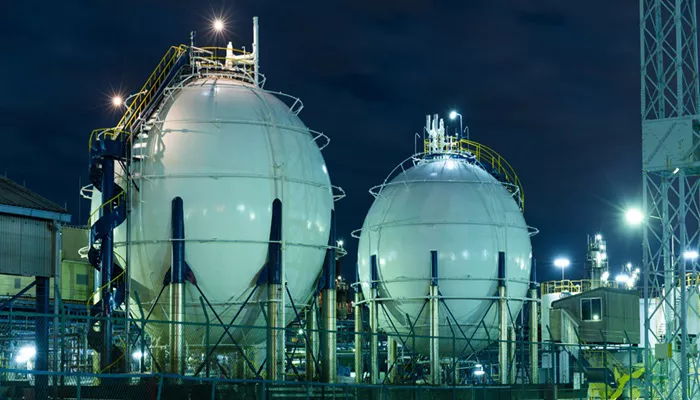Africa is poised to become a critical driver of global liquefied natural gas (LNG) growth, with the continent accounting for a significant share of new capacity as global production is projected to surge from 486 million tonnes per annum (Mtpa) in 2023 to 755 Mtpa by 2030, according to a new forecast by Rystad Energy.
This sharp rise in LNG output is largely driven by increasing demand in regions with insufficient domestic gas production or limited pipeline access. Africa currently hosts around 20% of the 477 Mtpa of LNG projects in the global development pipeline—approximately 93 Mtpa—spanning under-construction ventures, confirmed final investment decisions (FIDs), and pre-FID projects.
Nigeria Takes Center Stage
West Africa, and particularly Nigeria, stands at the forefront of the continent’s LNG output, accounting for nearly half of Africa’s total production. Rystad Energy anticipates that Nigeria’s LNG exports will grow by 20 million tonnes by the end of the decade. However, the country must address persistent production challenges to unlock its full potential.
With its vast gas reserves and growing domestic needs, Nigeria may increasingly rely on innovative solutions such as floating LNG (FLNG) units and small-scale mini-LNG plants to bridge infrastructure gaps and sustain both export and local supply.
Yet, operational disruptions—including persistent pipeline vandalism and oil theft—have caused Nigeria’s annual LNG liquefaction utilization rate to decline significantly, dropping from 90% in 2018 to just 60% in 2023. This deterioration highlights the urgent need for reforms and investment in infrastructure resilience.
Africa’s FLNG Dominance Grows
The continent is also home to the world’s highest concentration of FLNG infrastructure, reinforcing its strategic role in the evolving global gas market. Africa’s current onshore LNG capacity stands at around 70 Mtpa, or roughly 14% of global output.
Sub-Saharan Africa, spearheaded by West Africa, contributed more than half of the region’s LNG production last year. The region is now targeting a 50% increase by 2030. Nigeria remains the engine behind this growth, supplying two-thirds of West Africa’s LNG and over a third of Africa’s entire output—firmly positioning itself as a central pillar in the continent’s LNG future.
Despite being dwarfed by LNG heavyweights like the United States, Australia, and Qatar in terms of export volumes, Nigeria remains a major global player. Its LNG enjoys strategic advantages, such as shorter transit times to Europe and Asia and exemption from geopolitical trade tensions like the ongoing U.S. tariff war, making it an attractive supplier to global markets.
Challenges Hamper Export Ambitions
However, Nigeria’s LNG ambitions continue to be hampered by infrastructure sabotage and security concerns. These issues have significantly eroded the country’s production reliability, and according to Rystad Energy, while a recovery in exports is expected, Nigeria is unlikely to break into the world’s top five exporters in the near term.
Still, West Africa collectively remains a powerhouse, contributing over 60% of Africa’s total LNG exports in 2023—a figure totaling 22.7 Mt. The region’s LNG capacity is projected to more than double to 50.6 Mtpa by 2035, driven by major onshore projects in Nigeria and Gabon and the rollout of new FLNG initiatives throughout the coming decade.
Untapped Potential in Offshore Reserves
West Africa’s LNG prospects are further bolstered by its abundant gas reserves, which are composed of 65% offshore and 35% onshore resources. While the onshore segment is already well-developed—with more than two-thirds either producing or in development—nearly two-thirds of its offshore gas, equating to approximately 16 billion barrels of oil equivalent, remains untapped.
These offshore reserves are particularly well-suited for FLNG development, offering reduced reliance on vulnerable pipeline networks and increasing the viability of remote or deepwater assets.
Currently, West Africa holds about 20% of the world’s total FLNG capacity. With increasing investments and expanded resource access, the region is well-positioned to further cement its role in the global LNG supply chain.


